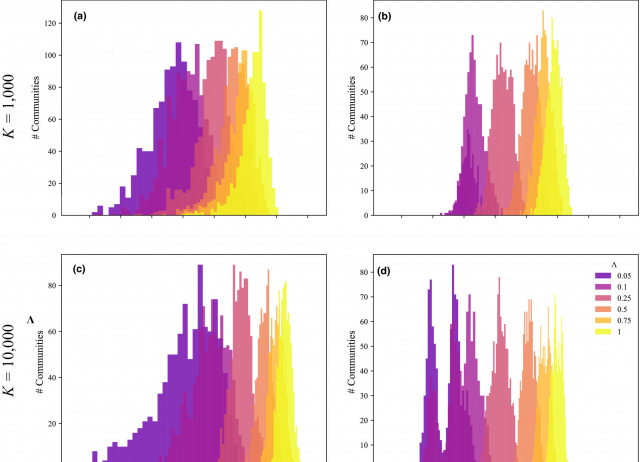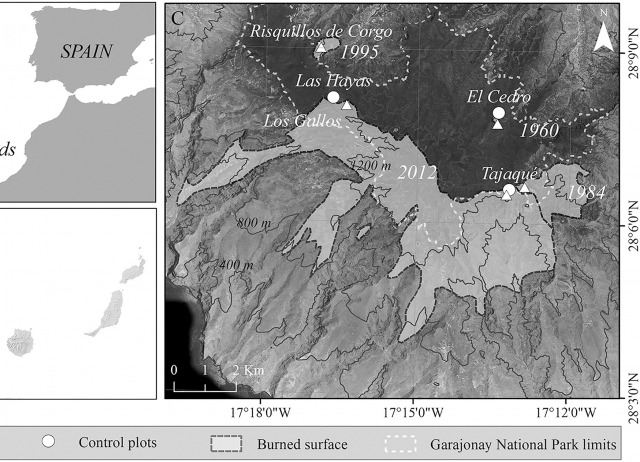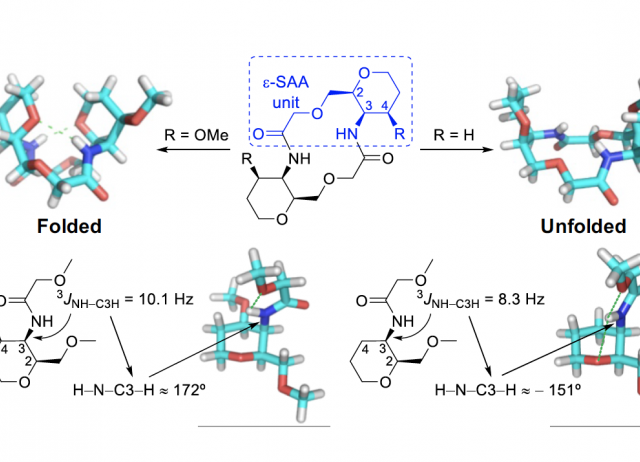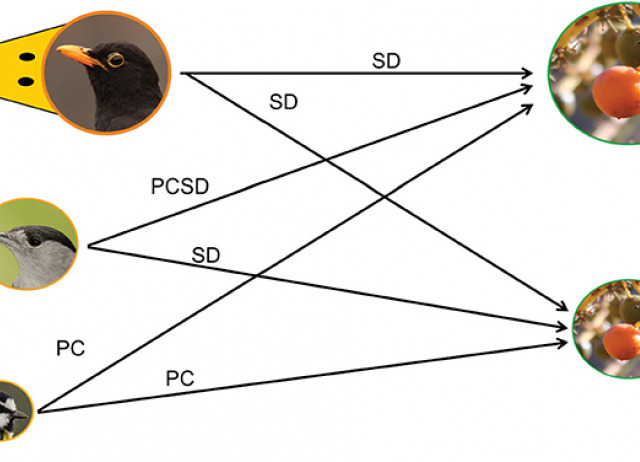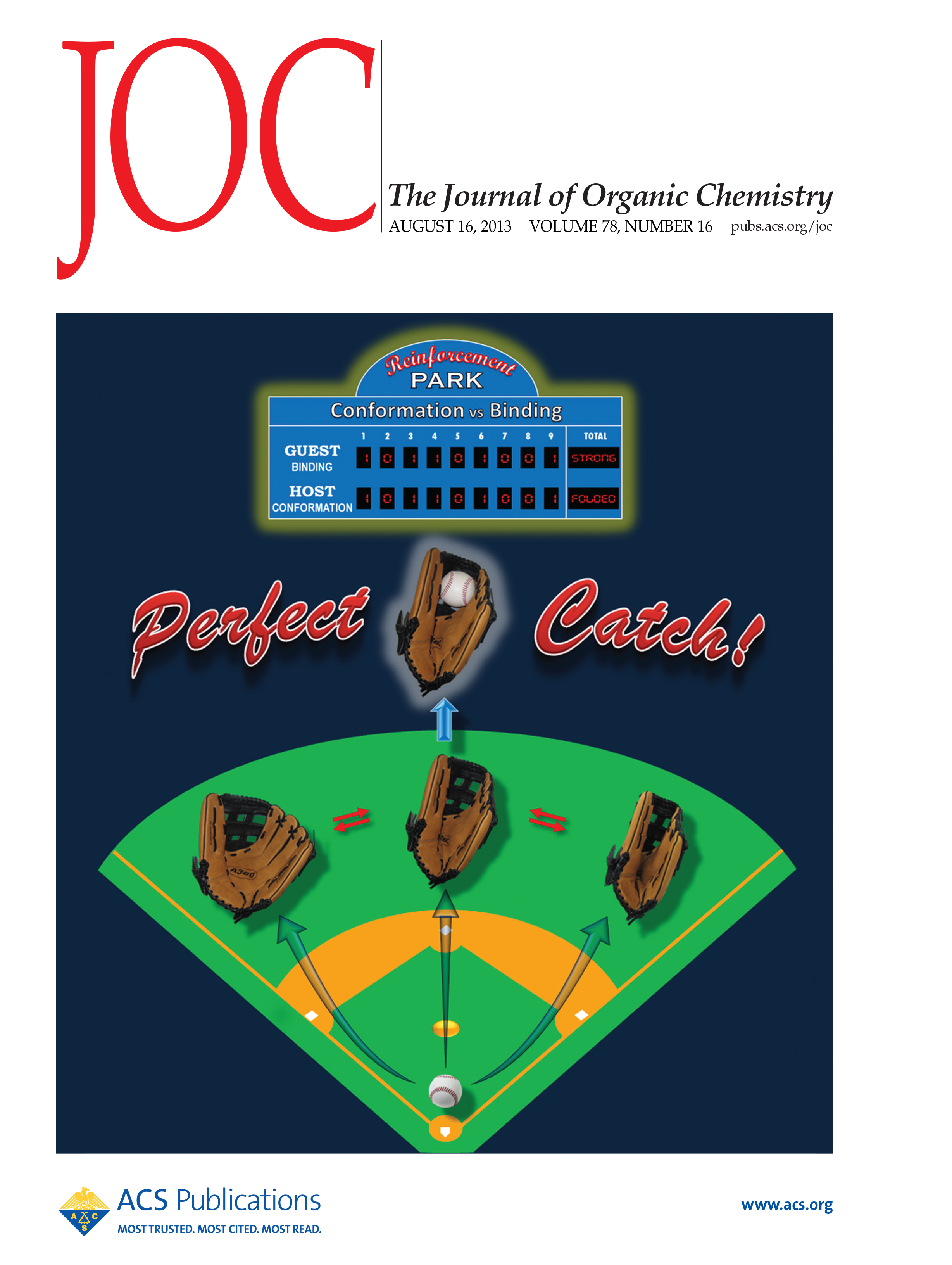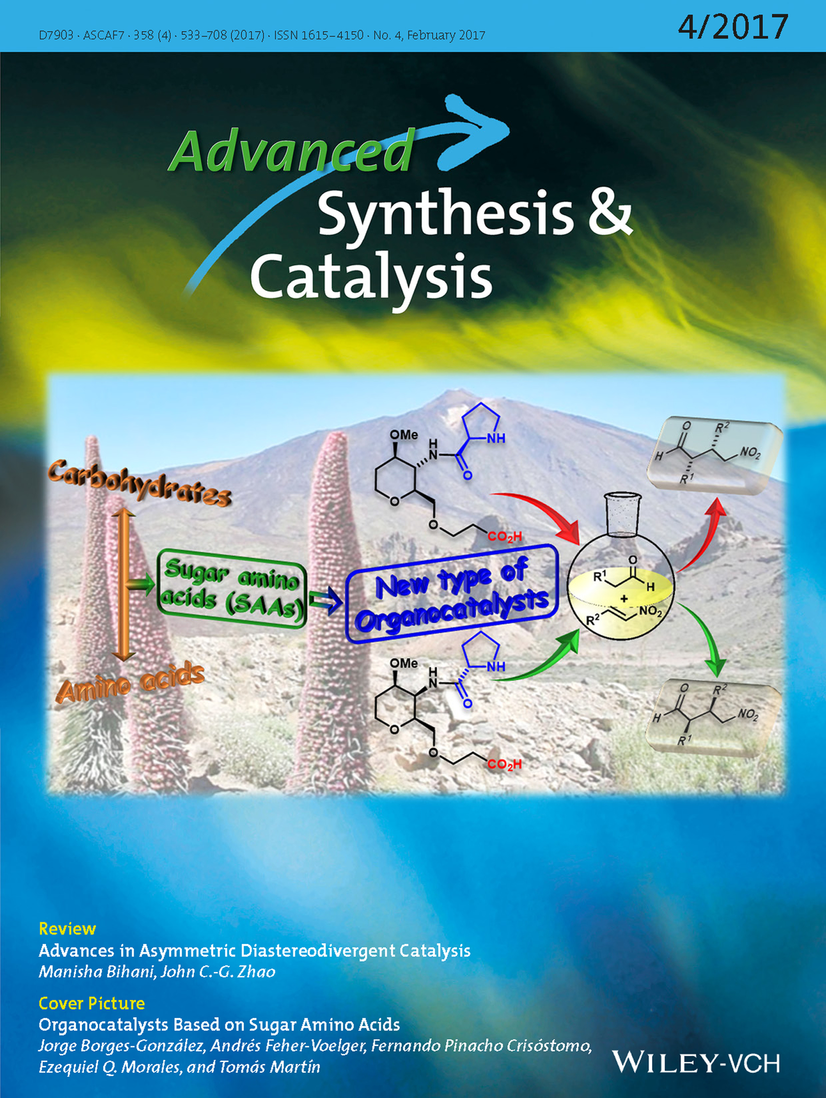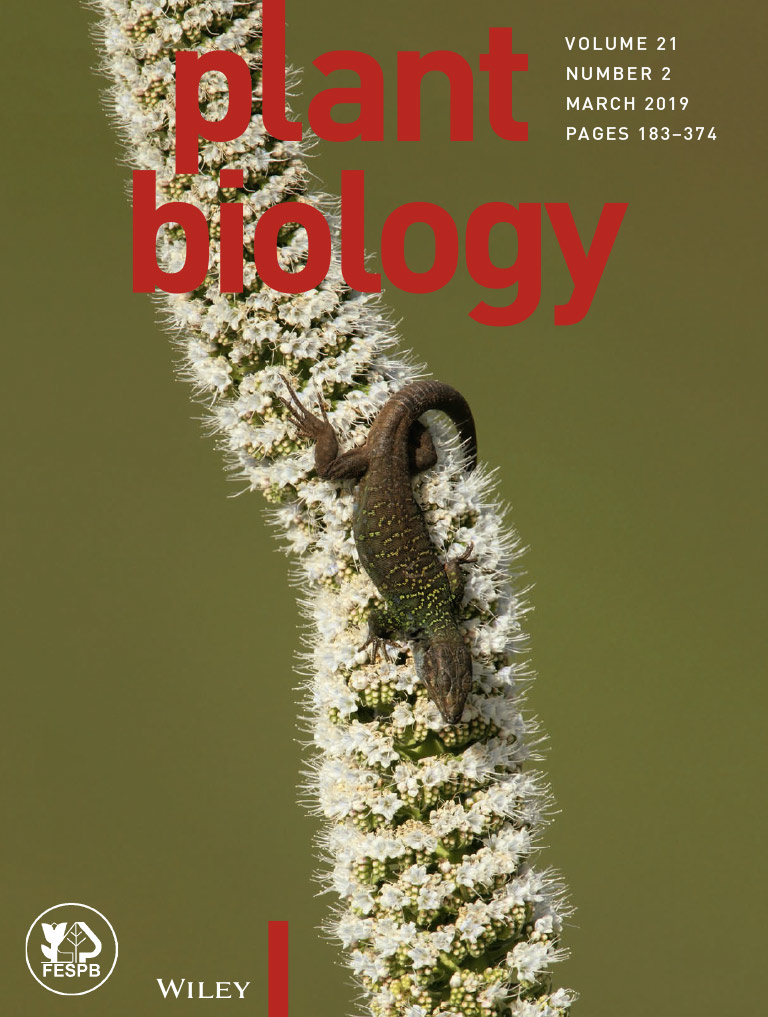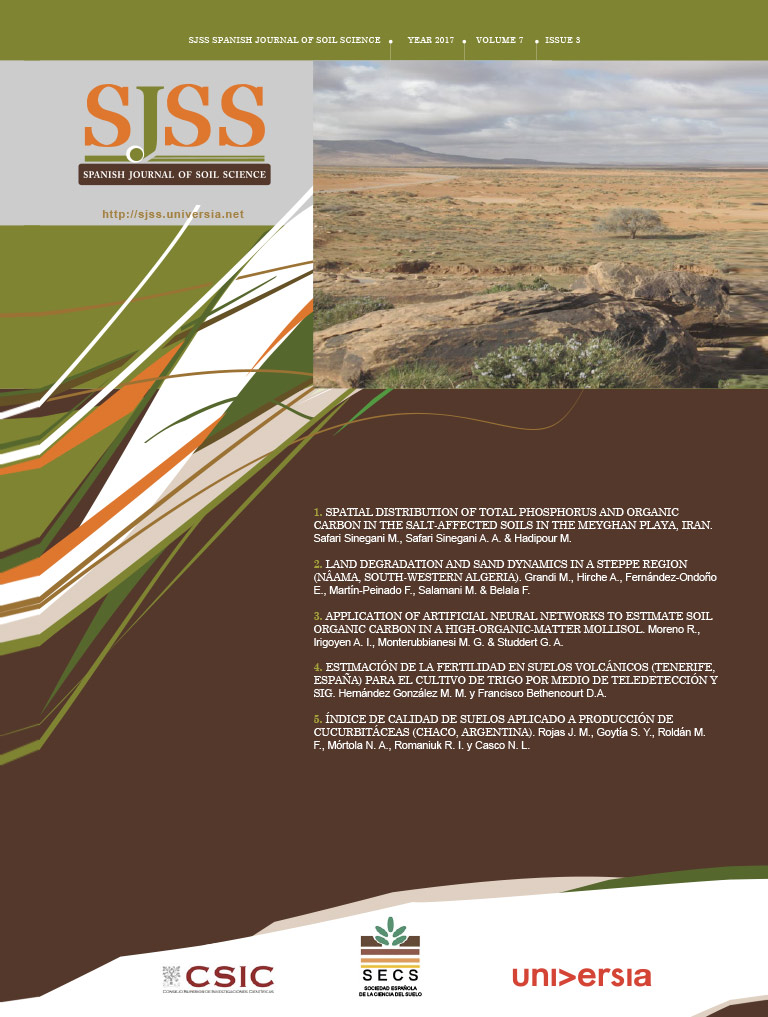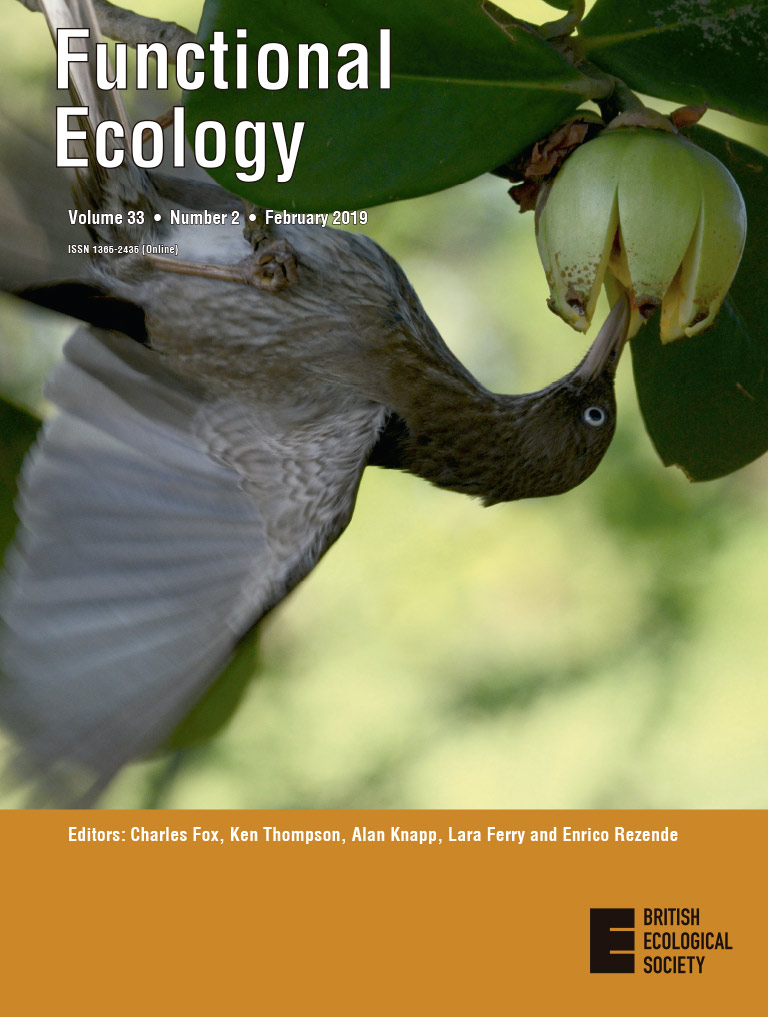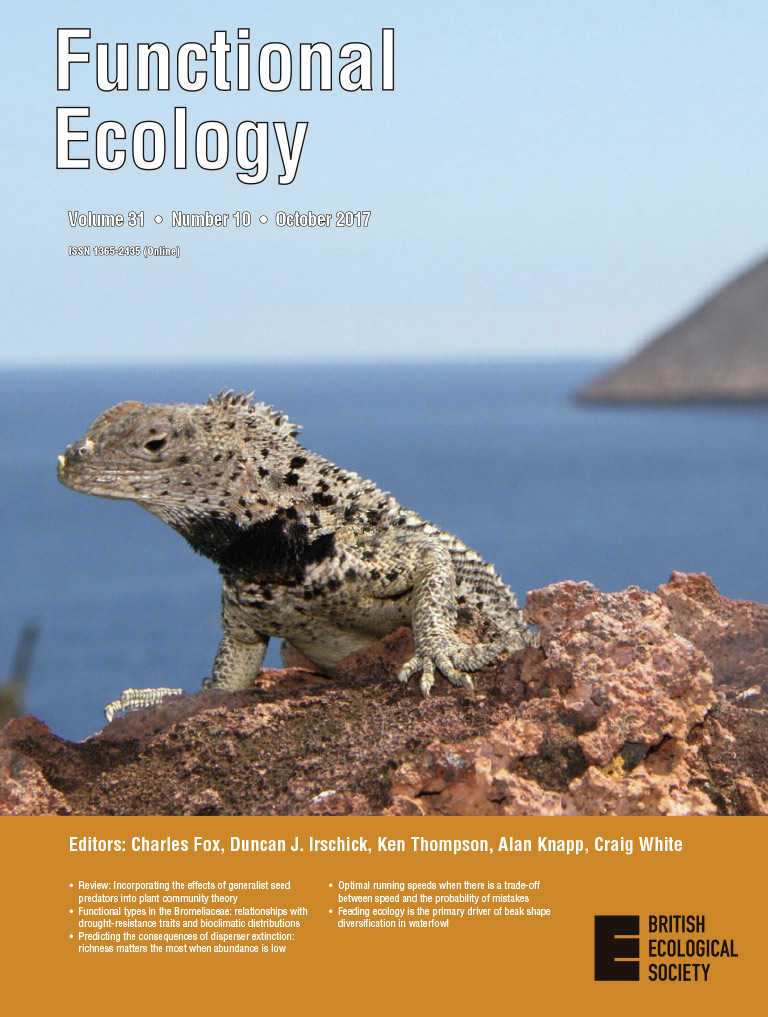Publications
This section includes a list of the latest IPNA scientific articles published in journals included in the Science Citation Index (SCI).
In DIGITAL.CSIC, institutional repository of the CSIC, you can find the complete list of scientific articles since 1962, as well as other collections of interest such as congresses, theses, books, informative material, etc. of the centre. The aim of DIGITAL.CSIC is to organize, preserve and disseminate in open access the results of our research.
In the institutional repository of the CSIC, you can find the complete list of scientific articles, as well as other collections of interest such as congresses, theses, books, informative material, etc.
Analysis of the IPNA 2014-2019 Scientific Production: bibliometric analysis from data collected in Scopus and Web of Science.

An integrated model of population genetics and community ecology
Quantifying abundance distributions is critical for understanding both how communities assemble, and how community structure varies through time and space, yet estimating abundances requires considerable investment in fieldwork. Community-level population genetic data potentially offer a powerful way to indirectly infer richness, abundance and the history of accumulation of biodiversity within a community. Here we introduce a joint model linking neutral community assembly and comparative phylogeography to generate both community-level richness, abundance and genetic variation under a neutral model, capturing both equilibrium and non-equilibrium dynamics, [Location]: Global, [Methods]: Our model combines a forward-time individual-based community assembly process with a rescaled backward-time neutral coalescent model of multi-taxa population genetics. We explore general dynamics of genetic and abundance-based summary statistics and use approximate Bayesian computation (ABC) to estimate parameters underlying the model of island community assembly. Finally, we demonstrate two applications of the model using community-scale mtDNA sequence data and densely sampled abundances of an arachnid community on La Réunion. First, we use genetic data alone to estimate a summary of the abundance distribution, ground-truthing this against the observed abundances. Then, we jointly use the observed genetic data and abundances to estimate the proximity of the community to equilibrium, [Results]: Simulation experiments of our ABC procedure demonstrate that coupling abundance with genetic data leads to improved accuracy and precision of model parameter estimates compared with using abundance-only data. We further demonstrate reasonable precision and accuracy in estimating a metric underlying the shape of the abundance distribution, temporal progress towards local equilibrium and several key parameters of the community assembly process. For the insular arachnid assemblage, we find the joint distribution of genetic diversity and abundance approaches equilibrium expectations, and that the Shannon entropy of the observed abundances can be estimated using genetic data alone, [Main conclusions]: The framework that we present unifies neutral community assembly and comparative phylogeography to characterize the community-level distribution of both abundance and genetic variation through time, providing a resource that should greatly enhance understanding of both the processes structuring ecological communities and the associated aggregate demographic histories.
Overcast, Isaac; Emerson, Brent C.; Hickerson, Michael J.
Short- and long-term effects of fire in subtropical cloud forests on an oceanic island
The recurrence of fires has increased considerably due to human activity, affecting even forests where traditionally fire is uncommon. In this study, we verify the effects of degradation caused by fire in the Canarian laurel forests, which is a subtropical forest formation restricted to the humid montane areas of these Macaronesian islands. We evaluated the effect of fire by comparing a series of burned plots corresponding to fires from 1960, 1984, 1995, to 2012 with geographically proximate and comparable unburned plots in the Garajonay National Park (La Gomera Island, Spain). We focused on three aspects that are immediately altered by fire: forest structure, floristic composition, and microclimate. These aspects have been quantified using (a) tree density, the Pielou index using tree height classes, and DBH for the vertical structure of the forest; (b) DCA, the Bray Curtis dissimilarity index, and a species indicator analysis for the floristic composition; and (c) temperature and relative humidity for microclimate under three canopy cover conditions. Our results reveal that, overall, structural complexity and its composition in the burned areas have barely reached 40% and 35%, respectively, when compared with unburned areas, and recovery mainly depends on time since fire. Additionally, burned plots presented more pioneer species, a higher density of trees, and climatic variables tend to have a wider range throughout the day. These data reveal the long time span that this ecosystem needs for recovery to a prefire state and how it may be more prone to subsequent fire events.
Bello-Rodríguez, Victor; Gómez, Luis A.; Fernández López, Ángel; Del-Arco-Aguilar, Marcelino J.; Hernández-Hernández, Raquel; Emerson, Brent C.; González-Mancebo, Juana María
A Domino Strategy for the Synthesis of 2H‐Pyrans from Propargyl Vinyl Ethers
Stable monocyclic 2H‐pyrans are synthesized from readily available tertiary propargyl vinyl ethers via a metal‐free all‐pericyclic domino manifold involving a sequential propargyl Claisen rearrangement/[1,3]H‐shift/oxa‐6π electrocyclization set of reactions. The wide scope of this protocol is exemplified by the synthesis of 21 different 2H‐pyrans incorporating a varied substitution pattern at the ring.
Tejedor, David; Delgado-Hernández, Samuel; Diana-Rivero, Raquel; Díaz-Díaz, Abián; García-Tellado, Fernando
Conformational Control of Tetrahydropyran-Based Hybrid Dipeptide Catalysts Improves Activity and Stereoselectivity
Herein, we introduce and demonstrate how carbohydrates can be used as conformational control units of organocatalysts to tune their catalytic properties. New hybrid dipeptide-like organocatalysts based on ζ-sugar aminoacids and proline were prepared and tested for the asymmetric Michael addition of aldehydes to β-nitrostyrenes. Taking full advantage of the modular nature of the carbohydrate motif, both reactivity and stereoselectivity were significantly improved. By simple structural changes, such as the elimination of the methoxy group in the C4 position of the tetrahydropyran ring, we obtained two complementary catalysts that allow access to both enantiomers of the γ-nitroaldehydes with excellent yields, diastereoselectivity, and enantiomeric excesses between 97 and 99%, using a catalytic load even below 1 mol%.
Borges-González, Jorge ; García-Monzón, Irma; Martín, Tomás
Unraveling the seed dispersal system of an insular "ghost" dragon tree (Dracaena draco) in the wild
Despite being abundant in urban gardens, the Canary Islands dragon tree Dracaena draco is close to extinction in the wild. It tends to produce relatively large fruits, which limits the pool of vertebrates that might disperse its seeds. We aimed to shed light on the seed dispersal system of this plant by studying its fruit size in relation to the feeding behavior of its present dispersers, and to discuss on possible differences with the past dispersal system, when large-sized dispersers were abundant. Besides fruit and seed characterization, we performed experiments on seedling emergence (using the characterized seeds), and field observations of the fruit handling behavior of frugivorous birds. Seed removal by granivores beneath and outside the dragon tree canopies was assessed through a field experiment. An additional seedling emergence experiment tested the effect of pulp removal from around the seed (using seeds contained within the fruits and manually depulped seeds). A feeding experiment was carried out with captive individuals of the Canary endemic white-tailed pigeon Columba junoniae-a large frugivore that occasionally consumes D. draco fruits-to test if its gut treatment influences seed viability. Small fruits produced seeds unable to germinate, while most seedling emergence was recorded only for seeds from large fruits. Our observations suggest that the only passerine species able to swallow large fruits is the medium-size passerine Turdus merula, whereas small passerines tended to pluck the pulp without aiding seed dispersal. Nonetheless, Sylvia atricapilla-the largest among the group of small passerines-occasionally transported fruits away from parent plants to consume the pulp, resulting in seed dispersal without any digestive treatment. This behavior indicates S. atricapilla might be occasionally a legitimate disperser of D. draco, since our experiments suggest that seed transport away from parent trees and pulp removal enhance both post-dispersal seed survival and seedling emergence. Lastly, the pigeons used in the experiment regurgitated mostly viable seeds, suggesting the legitimacy of C. junoniae as seed disperser for D. draco. Therefore, although D. draco likely had more seed dispersers in the past, we identified at least two bird species that can still disperse its seeds nowadays.
González-Castro, Aarón; Pérez-Pérez, David; Romero, Javier; Nogales, Manuel
A resource-efficient procedure to improve planning of invasive cat management on inhabited islets
Cats (Felis silvestris catus) are one of the most pernicious invasive species on islands, being responsible for the decline and extinction of many vertebrate taxa. Eradications programs are a powerful tool to fight against cat impacts on islands, but their implementation requires planning and design to prevent failure. In that sense, gathering data on cat habitat use, abundance and trophic interactions provides key information to effectively design management actions. The present contribution presents a simple resource-efficient methodology using cat feces to assess cat distribution, density and trophic ecology on an inhabited islet. This information is essential in order to effectively organize trapping efforts and minimize subsequent impacts of other species if a control or eradication campaign is undertaken. Additionally, our research effort evaluated the potential influence of coastal and anthropic resources on cat diet, which can also provide useful information for planning aside management actions. Cat distribution on our model islet, La Graciosa, was ‘clumped’, presenting higher densities in anthropic areas (villages and farms). The invasive house mouse and the European rabbit were the main prey items, although native invertebrates, reptiles and birds were also consumed. Cats on La Graciosa ingested a large quantity of garbage, which was negatively correlated with distance from human settlements. Considering the low time and resource requirements of this methodology, and the useful basic ecological information it provides, it can be employed to make optimal management planning decisions for small inhabited islands where cat control or eradication programs are being considered.
Piquet, Julien C.; Baumgartner, Eva S.; Medina, Féliz Manuel; Díaz-Luis, N.; Sevilla, J.; López, Heriberto; Nogales, Manuel; López-Darias, Marta
Dipolar glass polymers containing polarizable groups as dielectric materials for energy storage applications. A Minireview
Materials that have high dielectric constants, high energy densities and minimum dielectric losses are highly desirable for use in capacitor devices. In this sense, polymers and polymer blends have several advantages over inorganic and composite materials, such as their flexibilities, high breakdown strengths, and low dielectric losses. Moreover, the dielectric performance of a polymer depends strongly on its electronic, atomic, dipolar, ionic, and interfacial polarizations. For these reasons, chemical modification and the introduction of specific functional groups (e.g., F, CN and R-S(=O)-R') would improve the dielectric properties, e.g., by varying the dipolar polarization. These functional groups have been demonstrated to have large dipole moments. In this way, a high orientational polarization in the polymer can be achieved. However, the decrease in the polarization due to dielectric dissipation and the frequency dependency of the polarization are challenging tasks to date. Polymers with high glass transition temperatures (T) that contain permanent dipoles can help to reduce dielectric losses due to conduction phenomena related to ionic mechanisms. Additionally, sub-T transitions (e.g., γ and β relaxations) attributed to the free rotational motions of the dipolar entities would increase the polarization of the material, resulting in polymers with high dielectric constants and, hopefully, dielectric losses that are as low as possible. Thus, polymer materials with high glass transition temperatures and considerable contributions from the dipolar polarization mechanisms of sub-T transitions are known as dipolar glass polymers. Considering this, the main aspects of this combined strategy and the future prospects of these types of material were discussed.
Bonardd, Sebastián; Moreno-Serna, Viviana; Kortaberria, Galder; Díaz Díaz, David; Leiva, Ángel; Saldías, César
The long journey of Orthotrichum shevockii (Orthotrichaceae, Bryopsida): From California to Macaronesia
Biogeography, systematics and taxonomy are complementary scientific disciplines. To understand a species' origin, migration routes, distribution and evolutionary history, it is first necessary to establish its taxonomic boundaries. Here, we use an integrative approach that takes advantage of complementary disciplines to resolve an intriguing scientific question. Populations of an unknown moss found in the Canary Islands (Tenerife Island) resembled two different Californian endemic species: Orthotrichum shevockii and O. kellmanii. To determine whether this moss belongs to either of these species and, if so, to explain its presence on this distant oceanic island, we combined the evaluation of morphological qualitative characters, statistical morphometric analyses of quantitative traits, and molecular phylogenetic inferences. Our results suggest that the two Californian mosses are conspecific, and that the Canarian populations belong to this putative species, with only one taxon thus involved. Orthotrichum shevockii (the priority name) is therefore recognized as a morphologically variable species that exhibits a transcontinental disjunction between western North America and the Canary Islands. Within its distribution range, the area of occupancy is limited, a notable feature among bryophytes at the intraspecific level. To explain this disjunction, divergence time and ancestral area estimation analyses are carried out and further support the hypothesis of a long-distance dispersal event from California to Tenerife Island.
Vigalondo, Beatriz; Patiño, Jairo; Draper, Isabel; Mazimpaka, Vicente; Shevock, James R.; Losada-Lima, Ana; González-Mancebo, Juana M.; Garilleti, Ricardo; Lara, Francisco
Reproductive success of the Canarian Echium simplex (Boraginaceae) mediated by vertebrates and insects
Oceanic island ecosystems favour the appearance of novel interactions as a consequence of their depauperate and disharmonic flora and fauna. We investigated Echium simplex, endemic to the Anaga Biosphere Reserve in NE Tenerife, Canary Islands, belongs to the Canarian bird–flower element. Along two flowering seasons, we studied the breeding system of E. simplex, identified the floral visitors and compared the pollination effectiveness of different animal guilds (insects versus vertebrates) by means of selective exclosures. E. simplex is self-compatible but selfing significantly reduced fruit set. The flowers were visited by five bird species (mostly Phylloscopus canariensis and Serinus canarius, but also Cyanistes teneriffae, Sylvia atricapilla and Sylvia melanocephala), a lizard species (Gallotia galloti) and over a hundred insect species (mainly hymenopterans and coleopterans). Flying insects increased fruit set whereas small flower dwellers (mostly beetles) decreased both fruit and seed set. Vertebrates had a negligible effect on reproductive success. We conclude that although the floral resources provided by E. simplex may be important to some vertebrate species, these do not appear to contribute to increase fitness of the plant, which was more dependent upon flying insects for fruit and seed set. We additionally found that plant reproductive structures are heavily damaged by feral goats, which threaten the maintenance of this Canarian endemic species.
Jaca, Julia; Nogales, Manuel; Traveset, Anna
Novel 3D copper nanoparticles/chitosan/nanoporous alumina (CCSA) membranes with catalytic activity. Characterization and performance in the reduction of methylene blue
Herein, we report the surface modification of HO-treated nanoporous alumina (anodic aluminum oxide, AAO) membranes with chitosan (CS) by a solution casting method. Later, copper nanoparticles were incorporated into this CS-AAO membrane by immersion in an aqueous solution of a copper salt precursor and subsequent reduction using NaBH. The IR spectra and energy dispersive X-ray spectroscopy (EDS) analyses helped to confirm the presence of CS and copper nanoparticles both on the surface and inside the nanochannels of this AAO membrane (denoted CCSA). Notable differences in the surface energy, surface topography and morphology were observed between the CS-AAO and CCSA membranes. The catalytic performance of the CCSA membrane was tested in the reduction of methylene blue (MB).Our findings revealed that this system adequately combines the attractive properties of supporting of the AAO membranes, ion retention by CS and the catalytic activity of copper nanoparticles into a tridimensional array. Finally, the recyclability of the CCSA membrane was also assessed. The results showed that the performance of this membrane was not dramatically affected after four cycles of use.
Durán, B.; Hevia, S.A.; Molero, L.; Isaacs, M.; Bonardd, S.; Díaz Díaz, David; Leiva, A.; Saldías, C.
